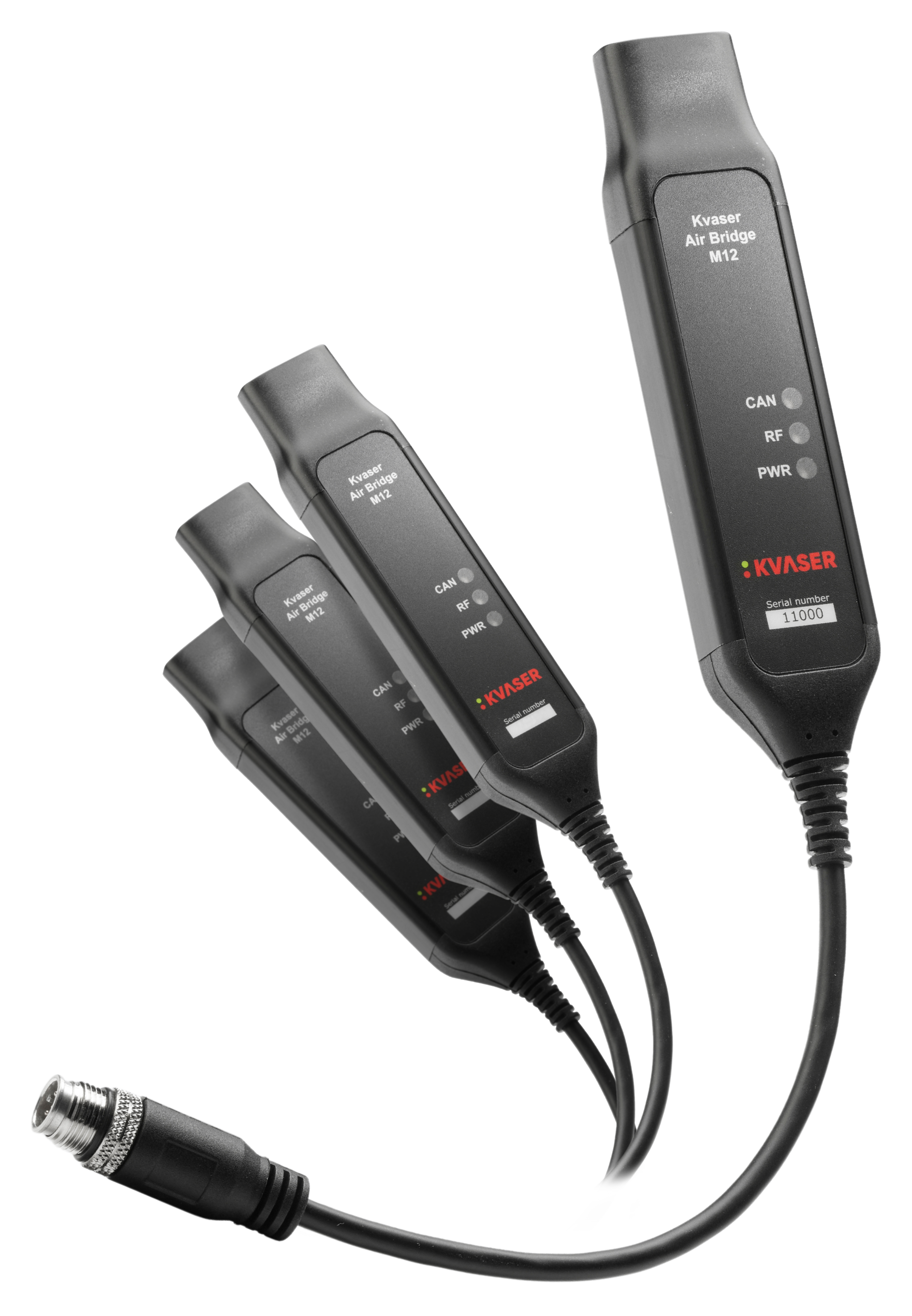A key feature of the Kvaser Air Bridge M12 wireless CAN bridge is its pairing mechanisms; the ability to select whether to discover other Air Bridge devices within radio range, or not. The Kvaser Air Bridge M12 uses context information to deliver up-to-date information about devices that are within radio range and available to pair with, offering a plethora of design-in possibilities to machine builders in every industry.
News
Exploring Kvaser Air Bridge M12: Pairing and Context-Awareness

Static/semi-static targeted pairing
For use cases in which the device to be paired with is known in advance, a targeted pairing procedure is used. Pairing will be completed as soon as devices meet each other. Devices can be statically paired – when a pair is expected to be paired ‘forever’ – or semi-static – when an application switches between devices to pair with (or un-pair). In the latter case, the Air Bridge devices are only active at the time of pairing and when the system is in use.

Example ‘static’ use case: An assembly line for production of complex machines consists of several test stations, one for each production stage. The Air Bridge is used to connect to the machine in each stage for the provisioning of software and parameters and to perform automated tests. In this use case, each machine is equipped with a master device that is automatically paired with the slave device of the next test station using the targeted pairing method. In this way the Air Bridge enables the assembly line to implement a digital Kanban that accompanies the machine being produced.
Example ‘semi-static’ use case: Railway maintenance machinery typically involves a Master machine with one or more detachable units. Reconfigurability is important as units can be replaced for many reasons, including overhaul and repair. This case requires wireless pairing for control purposes to be very simple and handled manually using a built-in feature in the user’s application. In this case, the master machine is equipped with an Air Bridge Master device and pairs with one or more slave units, identified using the Air Bridge’s serial number or a user-configured machine unit identifier (i.e. custom data) which is configured when the machine is commissioned.
Discovery pairing
For use cases in which the Air Bridge device to pair with cannot be predicted, discovery pairing method is used. This pairing method consists of a discovery phase followed by selection of the most appropriate device out of those devices that have been discovered. During the discovery phase, the Kvaser Air Bridge ‘one-to-any’ devices can transfer “User Status” and “Custom Data”, small amounts of data that enable a user to introduce context based pairing mechanisms into their applications.
Example use cases: Many test vehicles are used in test missions. The Kvaser Air Bridge M12 can be used to deliver logged results in a simple way by establishing a temporary Air Bridge link at the reporting location, where there is a test evaluation station with a back-office application. The vehicles arrive one by one and connect in the order that they arrive. If vehicles arrive at the same time, then all but one waits until the ongoing connection is closed. When data transfer is finished, the slave Air Bridge device in the connected vehicle prompts the master device to recommence the discovery phase.
Another example is that of an Automated Guided Vehicle (AGV) that needs charging. It approaches the charging area where there are several charging stations, some of which are in use. It activates discovery pairing on arrival and the charging station available responds with status information (user status) and capabilities (custom data) which provides information on the capacity and type of connector. Charging prioritization can be applied. While charging, the Air Bridge is used as a wireless link in the control loop to regulate the charging current.
Whichever pairing mechanism is chosen, pairing access is controlled. The Air Bridge M12 can block pairing with Air Bridge devices belonging to other systems, thereby creating an exclusive pairing domain. This feature can also be exploited to establish sub domains, enabling the user to create pairing access rules in the user application.

Context Aware Pairing
The Kvaser Air Bridge M12 enables the host application to provide context information over the CAN bus during the discovery phase. The Air Bridge is completely transparent to this information, enabling the user application to use any kind of context information, whether it be position, status, temporal limitations or other.
In the AGV example application cited above, information related to the availability of a charging station, capacity and the type of connector can be sent over the Air Bridge, allowing the AVG’s Master device to ‘select’ the charging station (with its Slave device) to which it connects.
 linkedin
linkedin twitter
twitter youtube
youtube youku
youku weixin
weixin